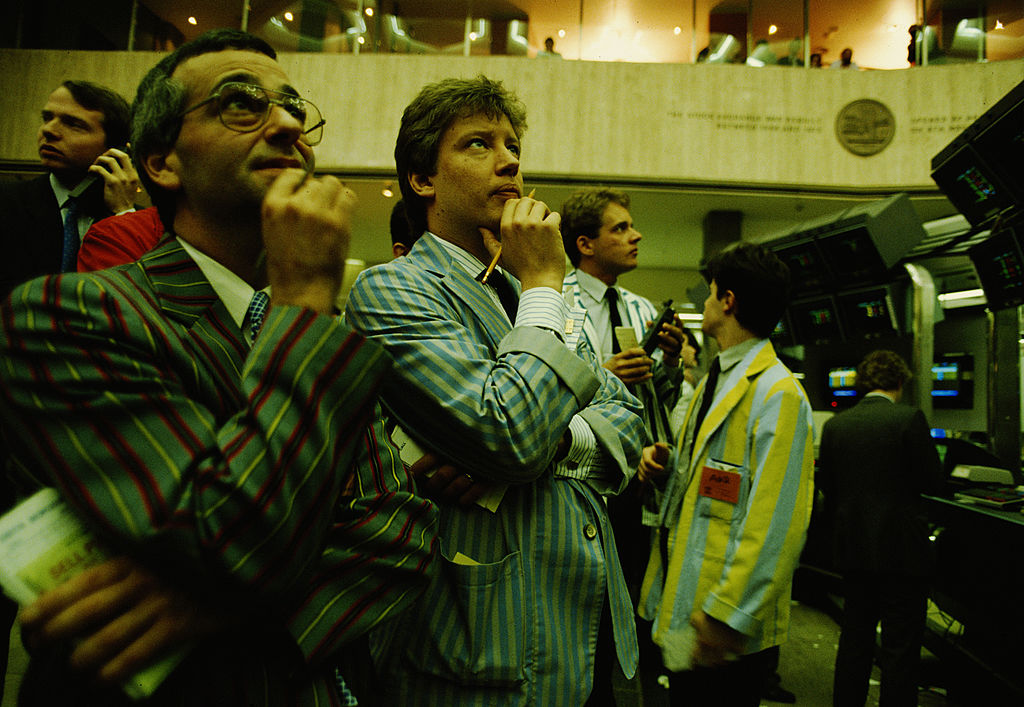The best way to play the oil market
Shale oil has revolutionised US oil production and released the oil market from Opec’s iron grip. John Stepek looks at the sector and explains how to play it.


The tug-of-war in the oil market continues.
On one side, we have oil cartel Opec. Opec has been surprisingly well behaved in terms of sticking to cuts that were agreed on at the end of last year.
On the other side, we have the US shale producers. With oil prices sitting at above $50 a barrel, they can make enough money to continue pumping away.
MoneyWeek
Subscribe to MoneyWeek today and get your first six magazine issues absolutely FREE

Sign up to Money Morning
Don't miss the latest investment and personal finances news, market analysis, plus money-saving tips with our free twice-daily newsletter
Don't miss the latest investment and personal finances news, market analysis, plus money-saving tips with our free twice-daily newsletter
Who'll break first?
The US has more than doubled its oil production in a decade
By September 2016 it had dropped back to around 8.6 million due to the slump in oil prices. But it's now back at just under nine million barrels a day, and is likely to head higher as drilling activity picks back up.
Could shale oil production offset Opec's efforts to prop up oil prices? It certainly sounds plausible. There was a really interesting piece by Ambrose Evans-Pritchard in the Daily Telegraph earlier this week. He talks to Scott Sheffield, founder of Pioneer Natural Resources, which pulls oil and natural gas out of the "Permian Basin" in Texas.
Sheffield reckons that the Permian could be producing more barrels of oil per day than Saudi Arabia's Ghawar oilfield within the next decade. That would make it the largest producing oilfield in the world.
Ghawar produces five million barrels a day Sheffield reckons the Permian could get to eight million per day. For perspective, it's sitting at around two million just now, while US total oil production is just under nine million barrels a day.
Now, clearly, the founder of a US shale company is going to be bullish on the sector. But even taken with a pinch of salt, there's some fascinating stuff in there. Oil consultants IHS reckon there are 104 billion barrels of recoverable reserves in the Permian. That's "five times more than the remaining oil in the North Sea fields of the UK and Norway."
Meanwhile, getting oil out of the Permian is cheaper than several other sources, such as "ultra-deep water" oil, for example. And once the wells have been drilled, you can make money even with the oil price down at near $25 a barrel, says Sheffield.
This is one crucial point about shale oil and "fracking" technology it keeps getting cheaper to produce more. According to the International Energy Agency, output (in terms of barrels of oil per day) per drill rig in the Permian has gone up sixfold since 2011. In certain other shale regions, the productivity increases have been even higher.
Wells appear to be becoming longer-lived too. One of the big "ah, buts" on shale oil that I remember from the early days was the "champagne cork" effect. The majority of the recoverable oil spurted out fast, meaning you got a lot of production in a short space of time, but were soon left sucking ineffectually on the dregs at the bottom of the bottle.
In technical language, that's known as a high depletion rate. But frackers are finding ways to lengthen the lifespan of wells using improved drilling techniques.
To cut a long story short, this is the bullish story the US has a lot of oil, and it's getting cheaper and easier to get it out of the ground.
Cheap oil forever?
But if you ask an oil company what the point of its business is, you'll likely get something more along the lines of: "To find and pump as much oil as possible". Ask a miner, and really he just wants to dig a big hole and find something precious or shiny or both. The money matters. Of course it does. But mainly because that's what funds the digging of new holes.
Yes, that's a gross oversimplification. Resources companies hedge and make assumptions and occasionally try to control costs, and of course, have very little pricing power.
And it's impossible to predict global demand for oil (will China slow down? Will the eurozone splinter and plunge us into a global depression? Will Elon Musk bore a hole through the centre of the earth and create magma-based mass transit systems?). So the focus on production is understandable.
But it will probably help your risk management if you can visualise oil and mining companies as big enthusiastic labradors that will just dig for the sheer hell of it, with no clear view of the profitability of the end result.
The point is, if oil production is profitable at a given price, then the shale oil producers will just keep pumping. Demand for oilfield services goes up. So costs start to rise. (It's worth noting that it's not clear precisely how much of the fall in "break-even costs" on wells in recent years is down to technology, and how much is simply down to falling oilfield services costs).
Rising costs don't matter though, because oil producers are in expansion mode. Banks are lending to them, they're racing to secure acreage life is good. The only thing that stops the oil from flowing is when it's finally not profitable to do so.
I suspect that this is the phase we're in. Investing picks up, and prices for oilfield services companies do too. If you fancy playing the oil market, this might now be the sector to focus on. My colleague David C Stevenson looked at one promising way to do so in a recent issue of MoneyWeek - subscribers can read the piece here.
If you're not already a subscriber, sign up now.
Get the latest financial news, insights and expert analysis from our award-winning MoneyWeek team, to help you understand what really matters when it comes to your finances.
John Stepek is a senior reporter at Bloomberg News and a former editor of MoneyWeek magazine. He graduated from Strathclyde University with a degree in psychology in 1996 and has always been fascinated by the gap between the way the market works in theory and the way it works in practice, and by how our deep-rooted instincts work against our best interests as investors.
He started out in journalism by writing articles about the specific business challenges facing family firms. In 2003, he took a job on the finance desk of Teletext, where he spent two years covering the markets and breaking financial news.
His work has been published in Families in Business, Shares magazine, Spear's Magazine, The Sunday Times, and The Spectator among others. He has also appeared as an expert commentator on BBC Radio 4's Today programme, BBC Radio Scotland, Newsnight, Daily Politics and Bloomberg. His first book, on contrarian investing, The Sceptical Investor, was released in March 2019. You can follow John on Twitter at @john_stepek.
-
 The new frontiers of cybersecurity and how to invest
The new frontiers of cybersecurity and how to investMatthew Partridge reviews the key trends in the cybersecurity sector and how to profit
-
 Investment trust troubles: back to the 1970s for investors?
Investment trust troubles: back to the 1970s for investors?Opinion Those fearing for the future of investment trusts should remember what happened 50 years ago, says Max King
